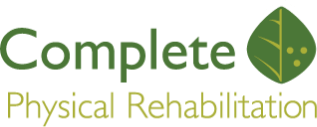Our bodies are composed of a complex network of muscles, tendons, ligaments, and nerves. Your sciatic nerve is the largest nerve you’ve got in your body. It extends from the lumbar spine through the buttocks area, and if there is unnecessary pressure applied to it, it can cause a world of problems for you.
Sciatica, also known as “lumbar radiculopathy,” is a very painful condition that results from the irritation of the sciatic nerve. This kind of pain is typically felt in the lumbar area and behind the thigh. It’s also a common complaint of individuals suffering with sciatica that they feel the pain radiating well into the lower limbs.
Sciatica can make bending, walking, and exercising painfully difficult. The most common cause of sciatica is the lumbar disc herniation, but it can also be caused by a back injury and disc degeneration.
How is sciatica diagnosed and treated?
According to the Mayo Clinic, “Sciatica most commonly occurs when a herniated disk, bone spur on the spine or narrowing of the spine (spinal stenosis) compresses part of the nerve. This causes inflammation, pain, and often some numbness in the affected leg.”
Sciatica is typically diagnosed with questions regarding your medical history, alongside a physical exam. Many physical therapists may also have a CT scan or MRI performed to locate the root cause of sciatica.
According to Move Forward PT, “Conservative care like physical therapy often results in better and faster results than surgery or pain medication.”
A physical therapist will work with you to:
- Increase your strength.
- Educate you on how to stand, bend, and twist properly so as to prevent future injuries.
- Reduce sciatica pain.
- Improve your range of motion.
- Improve your flexibility.
- Help you return to normal activities.
Stretches For Pain Relief
A physical therapist will typically use many different types of treatment to reduce the pain and symptoms you experience from sciatica. There are active treatments, passive treatments, aquatic treatments, and more.
On the chance that your physical therapist discovers any weak muscles, you will be given proper corrective exercises to strengthen your core. These strengthening exercises not only focus on the lower back but also the abdominal muscles, hip muscles, and glutes as well.
All of these exercises help strengthen the spinal column, including the tendons, ligaments, and supporting muscles while keeping the spine in proper alignment.
The stretching exercises that your physical therapy will show you are meant to target muscles that are inflexible and tight. Hamstring stretching is a common and important part of a physical therapy treatment program to alleviate sciatica. An aquatic exercise program may also be recommended by a physical therapist. You can do exercises easily with the buoyancy of water.
Types of Treatment:
Active therapy
Active therapy includes exercises, specific motions, and stretches meant to speed up the healing process and provide pain relief. Your physical therapist will educate you on the different stretches and exercises you can do at home for pain relief.
Passive therapy
Passive therapy may include massage therapy, electric therapy, heat therapy, or ultrasound therapy. All of these different kinds of treatment can help reduce pain, stimulate proper blood circulation, and speed up the healing process.
Electrotherapy
Electrotherapy uses electricity to strengthen muscles, reduce pain, increase circulation, and improve physical function.
Massage therapy
Massage therapy helps alleviate sciatic nerve pain. It loosens tight back muscles that may be pressing on the sciatic nerve, and it increases the release of endorphins for pain relief. Heat therapy helps relax muscles and reduce inflammation.
Ultrasound Therapy
People typically associate this kind of therapy with pregnant women, but that’s not all ultrasounds are used for! Ultrasound therapy helps relieve pain by sending soothing sound waves into deep tissues for relief.
Physical Therapy Could Be Your Answer
Physical therapy for sciatica is a non-invasive, effective, safe treatment plan that is targeted to the root cause of your pain. A physical therapist will devise specialized treatment specific to you and your needs.
Your physical therapist will help you learn how to prevent sciatica and other pain in the future by teaching you at-home exercises for maintenance. By practicing good posture, proper body mechanics, and staying in good shape, you can also prevent sciatica from occurring again.
If you or a loved one is suffering from sciatica, be sure to contact Complete Physical Rehab for your personalized consultation with one of our physical therapists. A comprehensive exam will be performed, and your physical therapist will make sure you’re back up on your feet in no time at all.
You’re just a phone call away from living a pain-free life — what are you waiting for?

